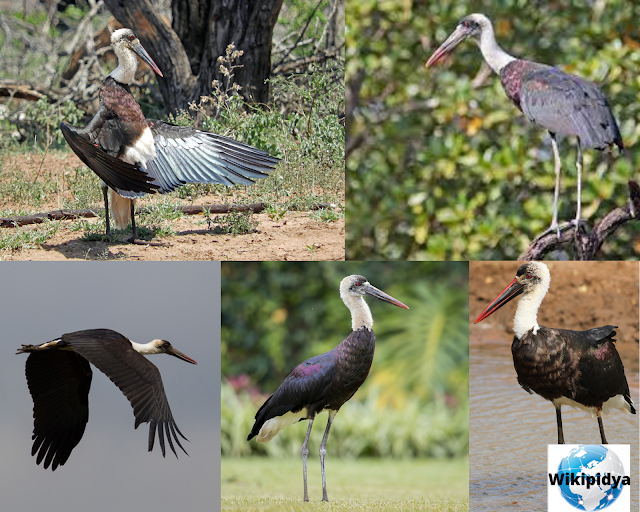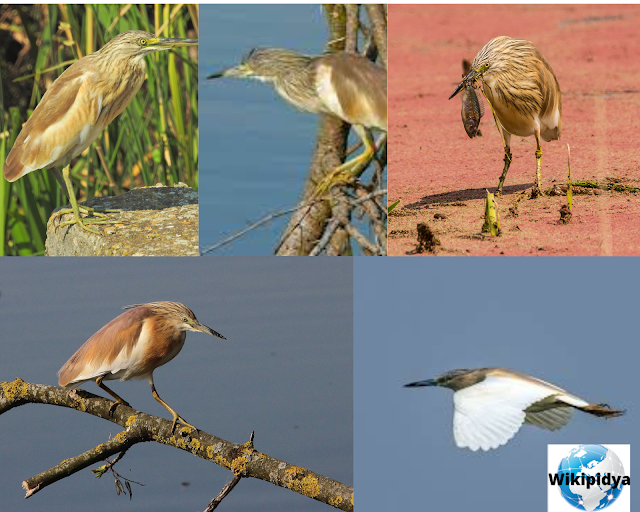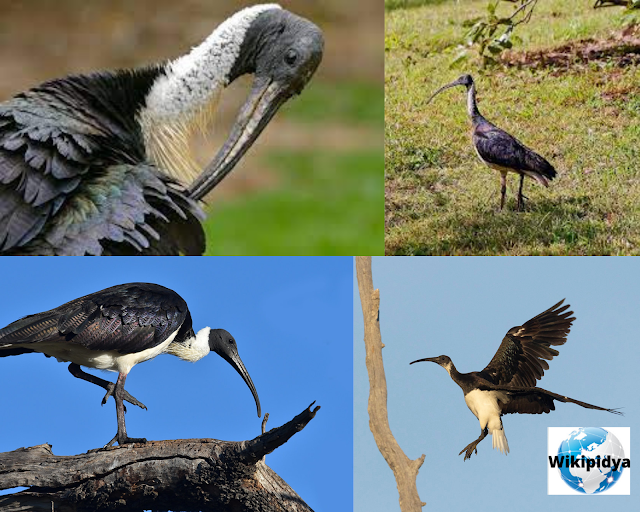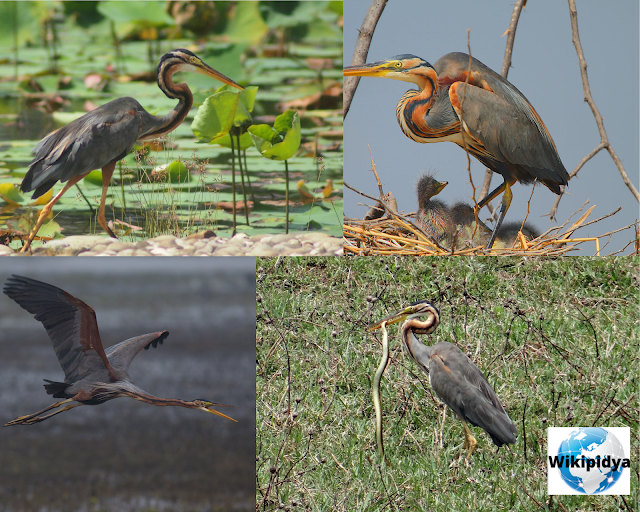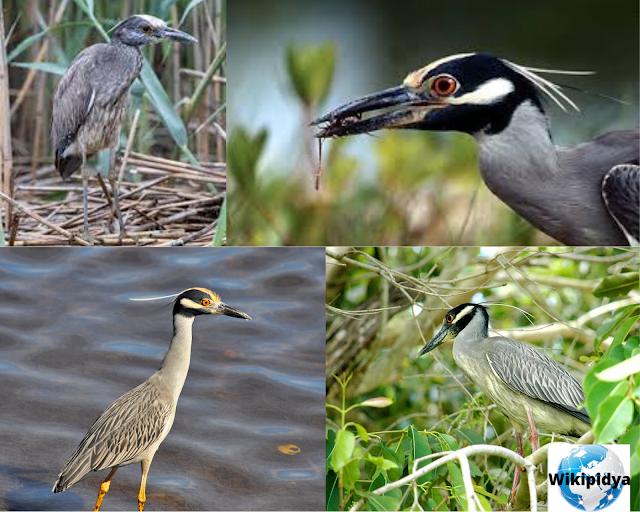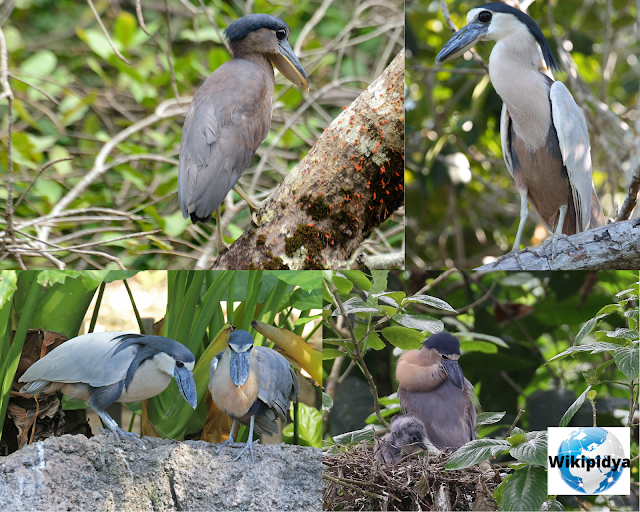How Many Species Of Storks? The part three
Storks (3/5)
The African Woolly-necked Stork
The African Woolly-necked Stork is a large bird native to sub-Saharan Africa. It is one of the most iconic birds in its region, and can often be seen wading through wetlands or standing atop trees. Its scientific name, Ciconia episcopus, means “bishop” in Latin due to its distinctive black neck ruff that resembles a bishop’s collar.
This species has an impressive wingspan of up to 1 meter (3 feet). The body coloration ranges from white with dark grey wings and tail feathers, while their long legs are bright yellowish orange in coloration. This stork will typically feed on small fish or amphibians found around lakes and rivers during the wet season when food sources are abundant; they also enjoy eating insects such as grasshoppers which they hunt for by walking slowly along muddy banks looking for prey items with their sharp eyesight.
African Woolly-necked Storks have been known to form lifelong monogamous pairs where both partners work together at raising young chicks until fledging age; this behavior makes them unique among other storks as many species tend not stay together after breeding season ends each year! These birds usually nest near water bodies so that they can easily access food resources while protecting themselves against predators like hawks or eagles who may try attack them from above if given opportunity – thus making sure their offspring remain safe too!
The Little Egret
The Little Egret is a small white bird that can be found in wetlands across the world. It has a long, slender neck and legs and its wingspan can reach up to twenty-four inches. Its bill is black with yellow tips, which helps it hunt for food in shallow water or mudflats. The feathers of the Little Egret are all white except for some grey on its back and tail feathers as well as around its eyes.
Little Egrets feed primarily on insects, crustaceans, amphibians, reptiles and fish but they will also eat some plant material such as seeds when available. They use their long necks to probe into muddy areas looking for prey items using their bills like tweezers to pluck them from hiding spots beneath the surface of the water or mudflat substrate . To help locate prey at night they have excellent vision due to large pupils that allow more light into their eyes than other birds possess making them nocturnal hunters too!
The Little Egret’s population numbers have been declining over recent years due mainly habitat destruction caused by human activities such as draining of wetlands , pollution , urbanisation etc . This species is currently listed under Appendix II of CITES (Convention On International Trade In Endangered Species) meaning international trade must be carefully monitored so not cause further decline in this species populations worldwide . Conservation efforts should focus on preserving existing habitats while creating new ones where possible so these beautiful birds may continue living throughout our planet's many wetland environments.
The Squacco Heron
The Squacco Heron is a small, greyish-brown heron found in wetlands and marshes throughout Europe, Asia and parts of Africa. It is one of the smallest herons in Europe, with an average length of only 54 cm (21 inches).
This species has distinctive white spots on its wings that make it easy to identify. Its body color ranges from light brown to dark grayish-brown depending on the season. The Squacco Heron usually feeds by wading or standing still in shallow water while waiting for prey such as fish or amphibians to come within reach.
Squacco Herons are social birds that often flock together during migration periods when they travel southward during winter months and northward again when spring arrives. They also form large colonies at their breeding sites where they build nests among reeds or trees near water bodies like lakes, rivers and ponds.
During breeding times males display courtship behaviors such as bowing their heads low towards females while spreading their wings wide open before mating takes place between pairs which can last up to two years!
Males will guard these nesting areas fiercely against any intruders including other members of its own species who may try stealing eggs from another nest! The chicks hatch after around three weeks but take several more weeks before becoming independent enough fly away from the nest site looking for food sources elsewhere nearby.
Overall, the Squacco Heron is an interesting yet elusive bird whose behavior patterns offer plenty insight into how animals adapt themselves according environment around them ! With conservation efforts underway this species should be able thrive once again across many wetland habitats worldwide.
The Straw-necked Ibis
The Straw-necked Ibis is a species of bird that can be found in many parts of the world. It is most commonly seen in Australia, where it inhabits grasslands and wetlands. The Straw-necked Ibis has an unmistakable look with its long, curved bill and straw-colored neck feathers. This species also has a unique behavior which sets them apart from other birds; they often travel together in large flocks as they search for food or migrate to new areas.
Straw-necked ibises are omnivorous feeders; their diet consists mainly of insects, amphibians, small reptiles and some plant matter such as seeds or fruits when available. They will also scavenge on carrion when necessary during times of drought or famine conditions which makes them beneficial to local ecosystems by helping to keep populations low while providing important nutrients at the same time!
These birds have adapted well over time due to their ability to survive harsh environmental conditions like droughts and floods while still finding enough resources needed for sustenance throughout these periods - something not all avian species can do so easily! As such this particular type of ibis remains quite common across much its range despite human activities having caused significant declines elsewhere around the globe due largely habitat destruction through agriculture expansion projects etcetera.
All things considered though it appears that this beautiful bird will remain part our planet's natural landscape for many years yet come if we continue taking proper care protect its environment properly going forward into future generations alike!
The Glossy Ibis
The Glossy Ibis is a beautiful wading bird that can be found in many parts of the world. It is characterized by its long, curved bill and glossy black feathers. The body length of this species ranges from 20 to 25 inches and it has a wingspan of up to 37 inches. Its diet consists mainly of small aquatic invertebrates such as insects, crustaceans, mollusks, frogs and lizards which they find while foraging in shallow water or mudflats.
Glossy Ibises are usually seen alone or in pairs but during migration they form large flocks with other ibis species like the White-faced Ibis (Plegadis chihi). They breed primarily during springtime when temperatures are warmest between April and June depending on their geographical location; however some may breed year round if conditions remain favorable throughout the season.
Nesting sites vary from solitary trees near wetlands to tall grasses along riverbanks where both parents take turns incubating eggs until hatching occurs after about three weeks time period . After hatching young birds stay close together for protection against predators before eventually dispersing into separate territories at around four months old.
Overall Glossy Ibises have an important role within their ecosystems due to their ability to help control insect populations through predation; thus maintaining balance between various plant communities which benefits not only them but also provides food sources for other animals as well making them invaluable members within our environment!
The Australian white ibis
The Australian white ibis is a species of bird native to Australia and New Guinea. It is an iconic species in the country, often seen scavenging for food in urban areas or wading through wetlands. The Australian white ibis has adapted well to human activity and can be found near cities, towns and farms throughout its range.
The adult birds are easily recognizable by their bright white coloration with black tips on their wings and tail feathers. They have long curved bills that they use for probing into mud or shallow water looking for aquatic invertebrates such as snails, insects, worms and crustaceans which make up the bulk of their diet although they will also eat carrion when available. They are gregarious animals forming large flocks during breeding season but otherwise living alone or in small groups outside this time period.
Australian White Ibises play an important role within ecosystems by helping keep insect populations under control while simultaneously providing food sources for other predators such as raptors like eagles who feed on them from above when possible.
Despite being considered pests due to their tendency towards eating garbage left behind by humans , these birds still remain a beloved part of many Australians’ lives thanks largely to how common they are across the continent despite being threatened due habitat destruction caused primarily by human activities such as land clearing , development etc.
The Purple Heron
The Purple Heron is a majestic bird that can be found in Europe, Africa and Asia. It has striking plumage of purple, blue and grey feathers which make it stand out from other herons. This species is an intermediate between the Grey Heron and the Great Egret, being larger than the former but smaller than the latter. The male Purple Heron has a deep purplish-blue neck with black streaks on its crown while females have more muted colors with duller blues and greys.
Purple herons are usually solitary birds although they may form small colonies when breeding season arrives in springtime or during migration periods to wintering grounds located mainly in Africa south of Sahara Desert as well as some parts of India & Sri Lanka .
They feed mainly on fish but also take frogs, insects or even small mammals if available near their nesting area like riversides , marshes & lakes . As such they require large wetlands for successful breeding which makes them vulnerable to human activities like draining marshlands for agricultural purposes or pollution caused by industry runoff into water bodies where these birds live .
In conclusion, the beautiful purple heron stands out among other wading birds due its unique coloration despite having similar habits & diet requirements making it an important species both ecologically speaking (as part of food webs) as well aesthetically speaking (being so attractive).
Unfortunately this magnificent creature faces threats from humans who alter natural habitats thus reducing suitable areas for feeding & nesting leading to population declines over time unless conservation measures are taken soon enough to protect them before it's too late!
The Yellow-crowned Night Heron
The Yellow-crowned Night Heron is a species of heron found in the Americas, from southern Canada to northern South America. It has an impressive wingspan of up to four feet and its body can be as long as two feet.
The bird's feathers are grayish-brown with white streaks on its back, while the head and neck are marked by yellow stripes that give it its distinctive name. Its eyes are bright yellow and it has a large black bill which makes them easily identifiable when they're flying overhead or perched on branches near water sources.
When hunting for food, these birds prefer shallow waters where they can wade around looking for small fish or frogs to eat. They also like marshy areas where they often spend their days wading through tall grasses searching for insects such as dragonflies or crickets that make up much of their diet during certain times of year when there isn't enough available prey in the water alone.
While feeding at night time is more common due to their nocturnal habits, these birds will hunt during daylight hours if necessary just like other herons do too!
The habitat range for this species includes wetlands throughout North America from Canada down into Mexico; however most sightings occur along coastal regions within Central American countries such as Guatemala and Honduras all the way southward into Ecuadorian mangroves located along Pacific coastslines there too!
In recent years conservation efforts have been put forth in order help protect this beautiful avian species so future generations may continue enjoying them gracefully soaring across our skies each day - something we should all appreciate now before it’s too late!
The Striated Heron
The Striated Heron, also known as the Mangrove Heron, is a small species of heron found in tropical and subtropical areas around the world. It is easily identified by its white body with black stripes on the wings and head. The Striated Heron can be seen wading through shallow waters looking for fish or other aquatic prey to eat. This species of herons are quite shy so they often hide amongst mangroves or reeds when disturbed by humans or predators alike.
Striated herons feed mainly on small fish but may also take insects, crustaceans and occasionally frogs from their habitats. They will stand still in shallow water waiting for unsuspecting prey to pass within reach before quickly striking out with their sharp bill to catch it.
These birds are monogamous which means they mate for life; pairs will build nests together near rivers where they can find plenty of food sources nearby such as estuaries and wetlands filled with an abundance of both plant-life and animal-life that provide them sustenance throughout the year regardless if it’s breeding season or not!
The conservation status of these beautiful creatures has been listed at least concern due primarily due to habitat destruction caused by human activities like logging, mining etc., along with pollution from chemicals used in farming practices that have contaminated many waterways across Asia Pacific region where this bird lives most commonly.
In order ensure long term protection, governments need implement more stringent regulations against illegal activities like poaching & hunting which threaten populations too. Additionally public awareness campaigns should be done promote responsible use natural resources help conserve delicate ecosystems support wildlife including striated herons !
The Boat-billed Heron
The Boat-billed Heron is a species of heron found in Central and South America. It is also known as the Boatbill, due to its distinctive bill shape resembling that of a boat. The bird's body length typically ranges from 25 to 30 inches, with wingspan measuring up to 50 inches across. Its feathers are predominantly dark grey or black on top with white underparts and long legs which can be either yellowish or greenish depending on the subspecies.
Boat-billed Herons inhabit wetlands such as marshes, lagoons and mangroves where they feed primarily on small fish but will also take crustaceans, amphibians and insects when available. They have adapted well for hunting in shallow waters by using their large eyesight combined with their slow stalking technique which allows them to stay still until prey come within striking distance before quickly snatching it up!
These birds are solitary creatures who only pair during breeding season when males perform elaborate courtship displays involving head bobbing, wing flapping and posturing while calling out loudly.
Once paired off they build nests high above ground usually near water sources such as rivers or lakes where females lay eggs between three four times per year hatching around two weeks later into fluffy little chicks ready for life's adventures! All in all these fascinating birds make an interesting addition any ecosystem providing us humans plenty of entertainment watching them hunt down dinner time after time again each day making sure we never forget just how amazing nature truly is!

